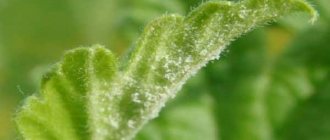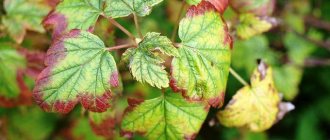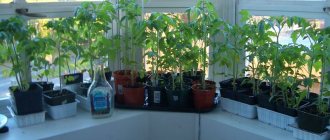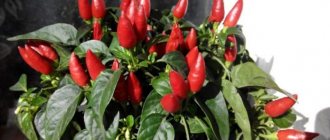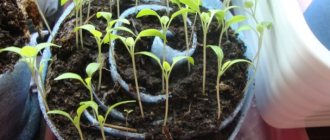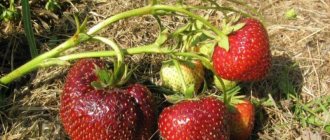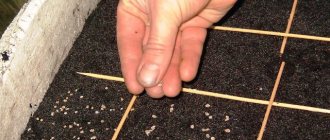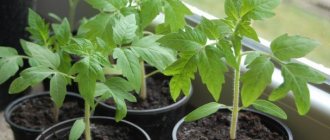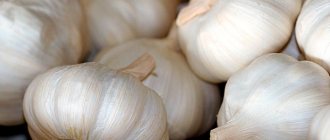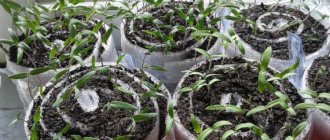“Goose in apples” is not a culinary masterpiece, but the name of an amazing vegetable of the pumpkin family, belonging to a species of the genus Lagenaria, which is also sometimes called “dish pumpkin” or gourd. India is considered the birthplace of this plant. The “goose in apples” pumpkin got its name because of the unusual appearance of the fruit, which really resembles geese with an elongated neck. You should learn more about sowing, growing and using this plant.
Description
Lagenaria is the most unusual member of the pumpkin family. This is a strong, tall, annual vine-type plant with soft green leaves. It blooms white and has large large flowers that look like a bell. The fruit has a very interesting shape: it looks like geese grazing in a meadow. The pumpkin itself is dark green with specks of white. The plant can reach a height of 12 to 15 meters. Lagenaria is able to bear fruit and bloom at the same time, without reducing the yield until frost occurs. From one bush you can remove 10-15 fruits weighing up to 1.5 kg, about 50 centimeters in length. Although some specimens can reach a weight of 8 kilograms.
Lagenaria is a dietary product. It is believed that it removes waste and toxins from the body. Only young fruits are used for food, and original kitchen utensils are made from large, ripe pumpkins by removing seeds and pulp and drying the peel until hard. Interestingly, the fruit can be removed not completely, but in parts - the cut becomes cork, and the plant continues to grow further.
Growing and caring for the plant
In our conditions, such a plant can only be grown with the help of seedlings and only in greenhouses or greenhouses. Calabash grows very quickly with proper care and favorable conditions.
Such a pumpkin will have to be pollinated manually, since its flowers open only at night, and thus become inaccessible to daytime insects.
Lagenaria does not like drafts and windy spaces. This is a tropical plant, and therefore it needs a warm climate. Often it is planted near fences or walls of houses.
Usually, ready-made seedlings are purchased for planting, but it is quite possible to grow them from seeds, which must be soaked in warm water for a couple of days before planting. They are planted to a depth of about three centimeters and covered with film.
After about a month, the seedlings can be planted in open ground, keeping a distance of about one meter between seedlings.
As the vegetable grows, it is provided with reliable support.
Lagenaria does not get sick often, sometimes it is susceptible to powdery mildew, cucumber mosaic or anthracnose. The soil for planting the plant should be well drained and rich in organic fertilizers.
Fertilizing with mineral and organic fertilizers is carried out every ten days. When the shoots reach four meters, they are usually pinched. When flowering, lagenaria needs to be pollinated. One female flower requires pollen from three male flowers.
Best materials of the month
- Coronaviruses: SARS-CoV-2 (COVID-19)
- Antibiotics for the prevention and treatment of COVID-19: how effective are they?
- The most common "office" diseases
- Does vodka kill coronavirus?
- How to stay alive on our roads?
Harvest the pumpkin crop approximately three months after planting, but always before the onset of cold weather. What’s interesting is that the fruits of the plant do not rot if you pinch off a piece and leave them to continue growing on the vine.
Germination of seeds
In order for the seeds to show high germination, it is not a bad idea to soak them for two days in growth stimulants (Epin or aloe juice). Pumpkin seeds have a fairly thick shell, so it is advisable to soak them before planting: put them in a linen napkin, moisten them with water and put them in a warm place for several days. It is necessary to ensure that the napkin remains damp. You can also use this method: after soaking, place the seeds in damp sawdust or sphagnum moss. The air temperature must be maintained at 23-24 degrees Celsius.
Planting and care
Plants are planted at a distance of one meter from each other, preferably on the south side. To reduce moisture evaporation, the soil can be mulched. For this purpose, you can use peat or humus. At night, plants can be protected with covering material. When the lagenaria reaches one meter, it needs to be tied to a trellis, and if it is not possible to make supports, it is necessary to put boards under the stems to protect them from slugs and damp soil. The growing season for the goose-in-apples pumpkin is about 220 days. Lagenaria usually opens its flowers at night and closes in the morning, and only nocturnal insects pollinate it. Therefore, for additional pollination it is recommended to use the manual method. Fruit ripening lasts from 1.5 to 3 months after pollination. One plant can have up to 9 ovaries.
When the main stem and side shoots grow to two meters, they should be pinched, and some of the ovaries can also be removed so that the fruits are better formed. This crop responds well to feeding with organic and mineral fertilizers; regular loosening of the soil and timely weeding have a beneficial effect on it. It is also necessary to provide the plants with timely watering, which is done only with heated water.
Goose in apples on branches, or How to grow lagenaria and not lose it
Both laughter and sin... I grew lagenaria and... lost it)) I accidentally “found” it at a height of three to four meters... But I’ll start with something else...
Lagenaria on rose hips
My “trick” is to grow lagenaria suitable for making bird nests. For those who will now sigh in disappointment and think that since this is “not eaten”, then it’s not worth reading, I hasten to stop... They eat! They still eat!!! But the young one, until she started growing seeds...
I have been pursuing a different goal for the third year in a row - not just to grow, but to grow to the required size and degree of ripening in order to get an excellent house for birds... For the third year in a row, lagenaria has successfully sprouted, bloomed profusely and... either does not set fruit at all, or the fruits dry out in infancy =((
Mom grows lagenaria in the form of a long cucumber, which grows even if you pick a piece out of it for stew... It still grows =)) But I needed exactly the “pot” lagenaria, which becomes empty inside when ripe.
Every year, with manic persistence, I buy seeds of different varieties and appearance... and every year it’s a bummer... And this year I bought several packs of Lagenaria seeds, variety “Goose in Apples” from Gavrish.
Goose in apples
I planted a lot... But this year was not a melon year at all, as it turned out... In general, nothing sprouted, and I put the last two seeds in a twenty-liter construction bucket filled with grass, mixed with soil... There was more grass. And they rose. Both!!!
Well, “to ascend” does not mean “to grow.” The two-season story repeated itself... It blooms profusely, but after setting the fruits dried out... and then the stems began to dry out... I spat and stopped watering this ill-fated bucket, only periodically glancing at my giant rose hips (4-6 meters in height), on which the dried ones lay lashes, with the thought “we should cut them off”...
Well, when I finally got around to this matter, I saw that the entire rosehip bush was dotted with small “geese”...
"Gosling" on rosehip branches
Some of the “goslings” simply cannot be photographed - high and far away... and there are thorny bushes... I’m wondering in advance how I’ll collect this “flock” in the fall))
"Goose" on a rosehip
Well, now, actually, about lagenaria... It came to us from India and Asia... It loves warmth and moisture... You can plant it (with us) immediately in open ground, approximately in the second half of April... In the middle zone, accordingly, later... The liana is very tall, with a powerful root system, so the depth of seed placement is at least 10 - 15 cm.
This year, it seems to me, my “goslings” will not have time to grow to the required size... Now, by eye, the largest one is only 30 cm in height, including the neck, and about 10 cm in diameter at the bottom. But it’s not scary... This year I’ll practice on “souvenirs”, and next year, inspired by the success of this year, I’ll definitely grow a whole “poultry yard”))
Thank you for stopping by)) Your N.
Harvest and storage
The vegetative period of lagenaria is quite long. The fruits, which are intended for collecting seeds and for various crafts, remain on the vines until fully ripened. Only young greens with a diameter of up to 5 centimeters and a length of up to 12 cm are used for food. Ripe pumpkins are harvested before the onset of the first frost. Such fruits have a very thick and hard (like a shell) peel, which allows them to be used in decorative arts.
How to use lagenaria fruits?
Young lagenaria pumpkins will be appreciated by gourmets - the sweet taste is very similar to squash. The main thing is to pick them in time, while the pumpkin still has soft and juicy flesh and a thin skin. If you skip this moment and let the lagenaria begin to ripen, the flesh becomes tough (in some varieties it even acquires a bitter taste), and the shell hardens.
You can prepare a lot of delicious dishes from young fruits:
- caviar like squash;
- pancakes;
- vegetable stew;
- salad;
- stuff with rice and meat and bake in the oven;
- marinate;
- pickle.
Lagenaria fruits have a unique property: if you cut a piece from them, for example, for a salad, the pumpkin continues to grow further, and the cut site simply becomes clogged and the edges dry out.
When lagenaria is fully ripe, its skin becomes so strong that it is almost impossible to break the pumpkin. Even after wintering outside, in most species it does not become soft.
Thanks to these properties, lagenaria fruits are used to make various small household items, such as dishes, vases, coasters, toys, ashtrays and even musical instruments. Simply make a hole at the top, remove the pulp using a wire and dry the pumpkin. Very beautiful multi-colored dishes are obtained by sanding the skin with sandpaper, painting it with gouache and varnishing it.
If you store milk in such a “lagenar” jug, it will not turn sour for a long time, and the wine will remain cool for a long time.
Collecting seeds
According to gardeners, pumpkin seeds “goose in apples” can not only be bought, but also obtained at home. To do this, the very first fruit is left on the vines until fully ripened, then it is stored in a warm place until October. After this, the pumpkin is cut with a hacksaw and the seeds are removed - there are about 200 of them in one fruit. It is better to use paper bags to store seeds. They retain their germination capacity for 7 years, but gardeners begin to use them as planting material in the second year.
Description of the variety
Pumpkin variety Goose in apples is a late crop. They grow it for 5 months, but always look at the condition of the fruit. Laginaria is picked from the bush when it reaches its optimal size. Pumpkin is used for food after 2 months. It tastes like zucchini.
Bottle or dish gourd are vegetable crops. For food, vegetables are harvested during milky ripeness. The plant is distinguished by bright fruits and long vines:
- heat-loving pumpkin. The Goose variety in apples is grown in greenhouse conditions in the northern regions or in open ground in the southern regions, with a humid and warm climate. The optimal temperature for normal plant development is 25-28 C, air humidity 60%. When caring for Lagenaria, it is necessary to establish frequent watering;
- spreading bush. The root produces 4-6 stems. They grow up to 10-14 m. Gardeners note the rapid growth of vines, up to 20 cm per day. To grow them, you need to arrange a support;
- the leaves are wide, round, pentagonal, green. Inflorescences develop in the axils. Male flowers appear first. After 5-7 days, female inflorescences begin to develop. The flowers are white or yellow, large, bell-like. The smell is not very pleasant;
- the fruits are large. Visually they can be divided into 2 parts. The lower one is rounded and large. The upper part is elongated, up to 40 cm, with a diameter of no more than 8 cm. When grown correctly, the top is wrapped. The shape of the fruit resembles a goose grazing in a meadow or resting with its head down;
- This pumpkin variety is distinguished by its decorative color. The peel is dark green. Light spots are scattered over the entire surface. Hence the name Goose in Apples;
- the peel is dense, hard, up to 5 mm thick. In mature Lagenaria it is stiff;
- the seeds are small, long with two outgrowths. Brown color;
- The weight of the fetus can reach 10 kg.
More on the topic: How does green pumpkin grow?
Pumpkins are used to make interior decorations and musical instruments. Craftsmen carve an ornament on the peel, adapt the fruit to a lamp, and use it as a vase. Lagenaria can be stored for a long time, but the peel is fragile. It may break under heavy loads.
Lagenaria or bottle gourd has one peculiarity. Its flowers bloom in the evening, after sunset. Only nocturnal insects can pollinate the plant. When grown in greenhouses, artificial pollination is carried out.
They take a male flower, it has a long stalk, and add pollen to the female inflorescences. They are formed on short stalks. When the ovary appears, the barren flowers are removed.
Application
This pumpkin is useful for consumption, especially for people with diseases of the kidneys, bladder, stomach, liver, as well as the heart and blood vessels. And yet, lagenaria is grown mainly for decorative purposes. They make unusually beautiful dishes, toys, smoking pipes, musical instruments, and candlesticks from it. The long and elastic stems are used in weaving, and the seeds of lagenaria are used to make oil. Bulk products are stored in dried, prepared containers, and milk is also well preserved in them.
What is lagenaria
Lagenaria is an annual climbing plant of the pumpkin family. Its homeland is India and Vietnam, which is why it is also called Indian cucumber or Vietnamese zucchini.
Lagenaria fruits are edible only when unripe. They are varied in shape: serpentine, elongated, similar to a huge cucumber or zucchini, jug-shaped, bottle-shaped, and egg-cell shaped. The color of the fruits resembles pumpkin or zucchini and can reach 2 m in length.
Lagenaria also performs a decorative function, entwining gazebos and fences. Lagenaria fruits are suitable for consumption fresh and after cooking.
Reference . Lagenaria stems are used to make baskets and other wickerwork.
